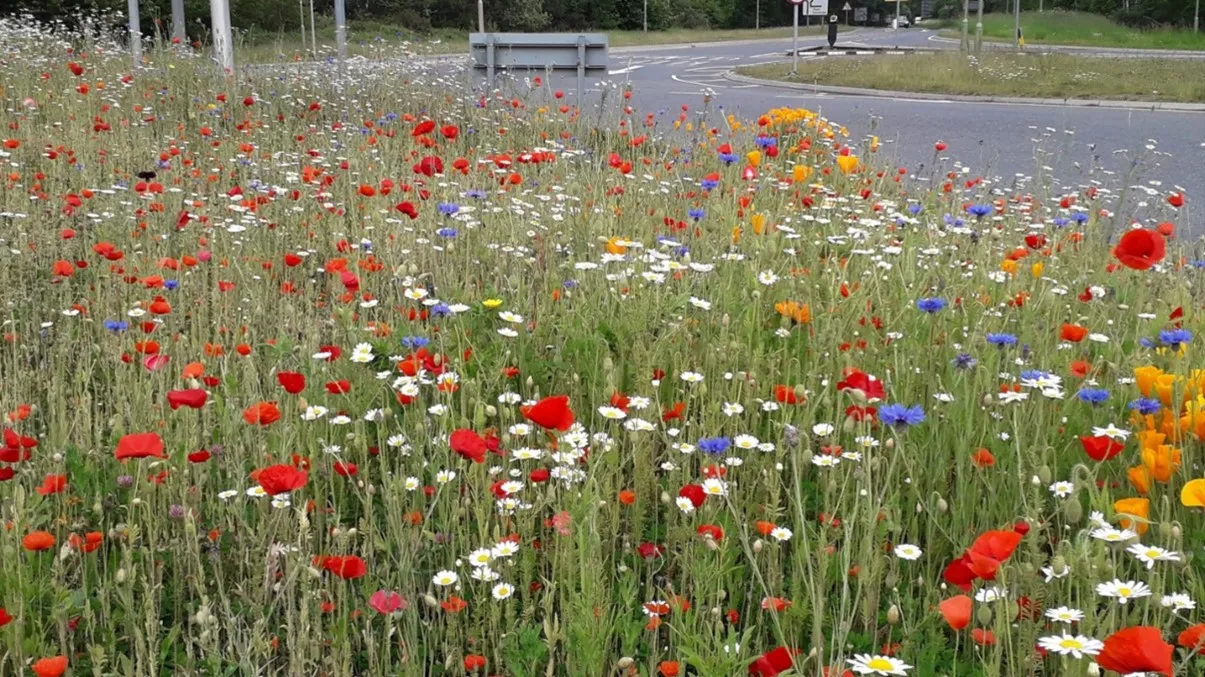Grassland and Wildflower Strategy
This strategy relates to amenity areas and grassland in areas of open space outside of wildlife sites
The strategy was produced to balance biodiversity enhancements with other requirements and obligations and to provide a balanced approach to grassland management in the district.
Wildflowers are important for several reasons:
- they are beneficial for insects including butterflies and bees and other invertebrates, which in turn benefits birds and mammals
- they are visually attractive and can add to a sense of wellbeing
- they provide opportunities for education and recreation including nature studies, art and photography
Hart's approach
We are committed to sympathetic approaches to grassland management. In appropriate areas reducing the number of grass cuts each year can allow native plant species, which are present, to thrive.
Of the total area of grass we own, 60% is managed for biodiversity enhancement and carbon sequestration and given a conservation cut. This means we will only cut once or twice a year in the spring and/or autumn. The remaining 40% of our total grassland area is cut regularly.
As part of our Biodiversity Action Plan, we have been supporting and developing new wildflower projects across the district.
Creating a wildflower area is not as straightforward as not cutting grassland or adding seeds to grassland (although in the right circumstance this can be beneficial). In key areas preparation of the ground and sowing native wildflower seeds is undertaken to proactively encourage their growth. We have installed additional wildflower planting on most of our larger regularly cut areas (see example at Zebon Copse below); the locations of these can be seen on Hart’s interactive map.
